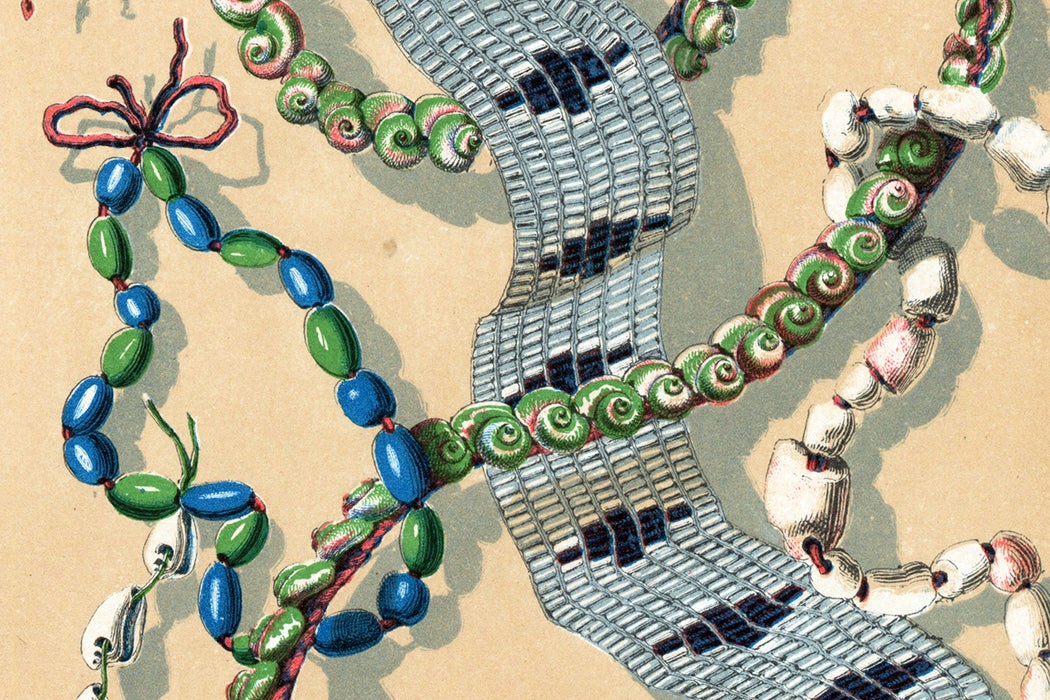Seashell-derived wampum was Massachusetts’ first legal currency, and continued to be used and respected as currency throughout northeastern America, even into the nineteenth century. For archeologist James W, Bradley, wampum’s incredible success was a rare example of how “very different cultures learned to communicate through a material culture form…to show respect, negotiate and seal agreements.” And it worked because neither side controlled the process. Eastern Woodlands Native Americans produced wampum and Europeans commercialized it. It was a joint effort.
The English modified the Massachusett word wanpanpiag into wampum, and the Dutch called it zeewam. This was possibly a combination of the Dutch word for sea (zee) and the Massachusett word wanpanpiag, marking the beads’ marine origins. Either way, for seventeenth-century Europeans, wampum meant money.
Providing adequate legal tender was a challenge for seventeenth-century monarchs. In England, currency shortage forced some tradesmen to produce “tokens” so their neighbors-cum-clients could pay for things like bread and ale. Once across the Atlantic, the English found that coinage was even rarer than at home, and tokens were useless. Wampum filled the gap.
The American Journal of Numismatics described the process of making wampum in 1883. Beads were cut out of seashells and “wrought as smooth as glass…[then, with] a nail stuck in a cane or reed…they roll it continually on their thighs with their right hand, holding the bit of shell with their left; so in time they drill a hole quite through it, which is very tedious work.” The shape of the resulting discoidals (disk-shaped beads) was slightly elongated with a hole drilled into the center. They were usually strung onto animal sinews or cords, not used separately. The length and quality of these “belts” of beads determined value.
So did the color. Beads were usually white or purple/black, linked to shell type. In south Massachusetts, white beads were most common and came from Busycon shells, whereas the rarer purple beads came from the Mercenaria clam shells and were much more difficult to drill. In Maine, however, purple beads came from the Mytilus edulis marine mussel shell and were more common. Archeological finds along the Atlantic coast have also uncovered white beads painted red with ochre.
Wampum, however, was more than currency. Until the seventeenth century established intercontinental trade in furs, food, knives, hatchets, and so on from across the Atlantic, payment was only one of six uses of wampum. Bradley stresses that it was, foremost, used “as a summons to Council…as a physical reminder of the Great Law…as a medium of ritual exchange…as a gift…[and] as a means for personal ornamentation.” The harder-to-drill purple Mercenaria beads, for example, mostly adorned chiefs and sachems.
As the seventeenth century unfolded, trade required increased wampum production and the other five uses lessened. Inland Native Americans journeyed more frequently to the Atlantic coast to procure it, and coastal Native Americans spent busier winters creating it. By the 1630s, wampum was the preferred medium of exchange in the Northeast. Inland and northern First Nations began to make their own, and the French introduced glass beads. Bead quality reached new heights by the 1650s, positioning wampum as the most important Northeastern American commodity.
Within a decade, however, the heyday was over. Overproduction weakened both the value and the quality of wampum, and by the 1660s its use as currency was diminishing. First Nations returned to the six original uses, and some European immigrants industrialized the process, providing part-time work for the poor until the end of the nineteenth century. The new, industrialized wampum was different, and became mostly a currency for settlers expanding westward.
Curiously, animal and claw forms carved out of purple shell appeared around New York at this time. It was a collaboration between Native entrepreneurs and Dutch merchants and was particularly successful in First Nations societies. It coincided with the arrival of large conch shells from the Caribbean island of Dutch Curaçao, where people ate conch flesh but discarded the shells. This created a strange triangular trade of horses and salt from the Netherlands, with conch shells from the Caribbean and various northeastern American products in return. But these new seashell shapes did not reach the same heights as original wampum had in the early 1600s, when wampum was a model of cross-cultural success.







